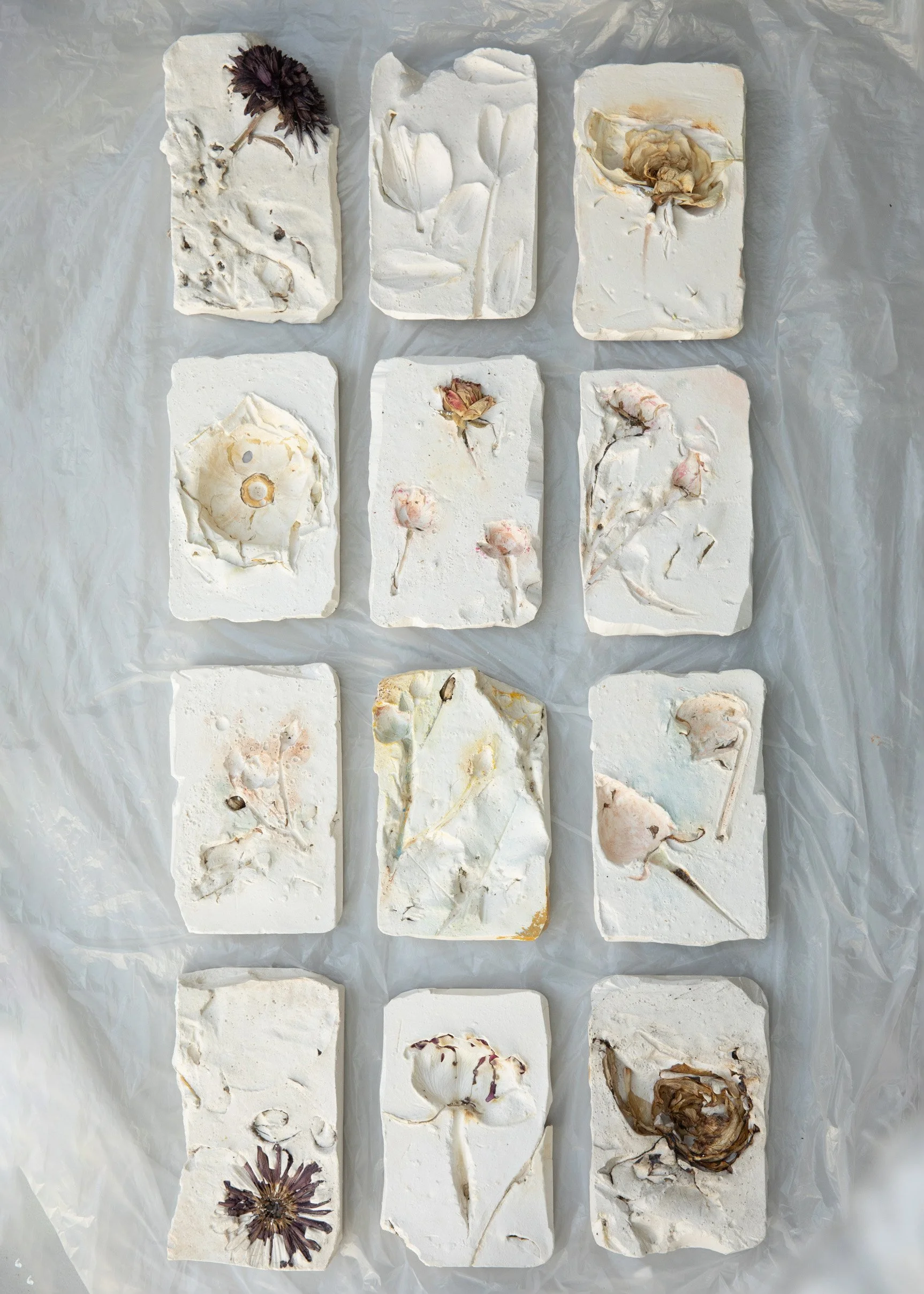what remains once our dreams turn to stone?Journal entry, Spring 2025
Fossilized Dreams is a series of botanical imprints created by encasing flowers in plaster. Once vivid and full of life, the plants have dried out, crumbled, or burned leaving behind only delicate outlines and charred remnants.
These fragile traces became a metaphor for the transient nature of utopias and the quiet violence of time. Each imprint holds both memory and loss: a record of beauty that once existed, and of its inevitable decay.
Within the context of Eden: Lost Coordinates, the work reflects on humanity’s recurring attempts to build paradise, each time leaving behind only fragments, fossils of our aspirations. What remains is not the dream itself, but its absence.
Dream it
〰️
Dream it 〰️
I kept circling one question: how does a utopia die?When Julia (the curator) framed Eden as an imagined coordinate, I began thinking about time as a quiet eroder. Most of the time our ideals don’t shatter, they fade. I found myself reading about fossilisation: how pressure, absence and mineral exchange slowly replace what once was living. That felt painfully human. We compress memories to survive, we preserve them and, in the same act, change them.
Flowers became the stand-ins for our hopes: vivid, tender, and already vanishing the moment they’re cut. I dried, pressed and finally burned some… not out of spectacle but to witness the thresholds: bloom → brittle → ash. The char left the most honest lines; absence draws so precisely.
The paradox of preservation sat at the centre: to “save” a petal in plaster is to entomb it. To hold onto a dream is to risk ossifying it. Eden, in this sense, became a sediment.
Personally, I was thinking about migration, memory and the rituals of keeping: the keepsake in a drawer, a photo fading on a fridge, a story told so often it hardens into something slightly untrue. Fossilised Dreams is my way of admitting that what remains is not the dream itself but its after-image…
I learn the petal by its absence....Whatever it is, the way you tell your story online can make all the difference. I began experimenting with botanical imprints and plaster, layering dried petals and pigment into soft white surfaces. The process felt almost archaeological, like unearthing something ancient rather than creating anew.
I allowed the plaster to dry and carefully removed parts of the plants to reveal their imprints; some fragments I kept, to show what is left of our dreams. With a fine brush and a pair of tweezers, I patiently lifted fibres and residue, tracing the negative lines until the pattern emerged. To emphasise select contours, I added muted watercolours, allowing the wash to settle only where the surface caught the light.
“Fossilized Dreams”, 2025
Mixed media
10x15x2 cm, 12 blocks
Seeing Fossilized Dreams complete, I felt a quiet joy. In my hands, each piece was warm, pleasant to the touch. The petals have gone, but their contours remain - proof that beauty can endure as residue. As light moves, the imprints become alive, not blossoms now, but caveated memory made visible. What’s missing feels as present as what remains and what remains feels strangely alive. Within Eden: Lost Coordinates, the work suggests paradise isn’t a flawless garden, but a continuity of traces, where beauty surviving through transformation.




